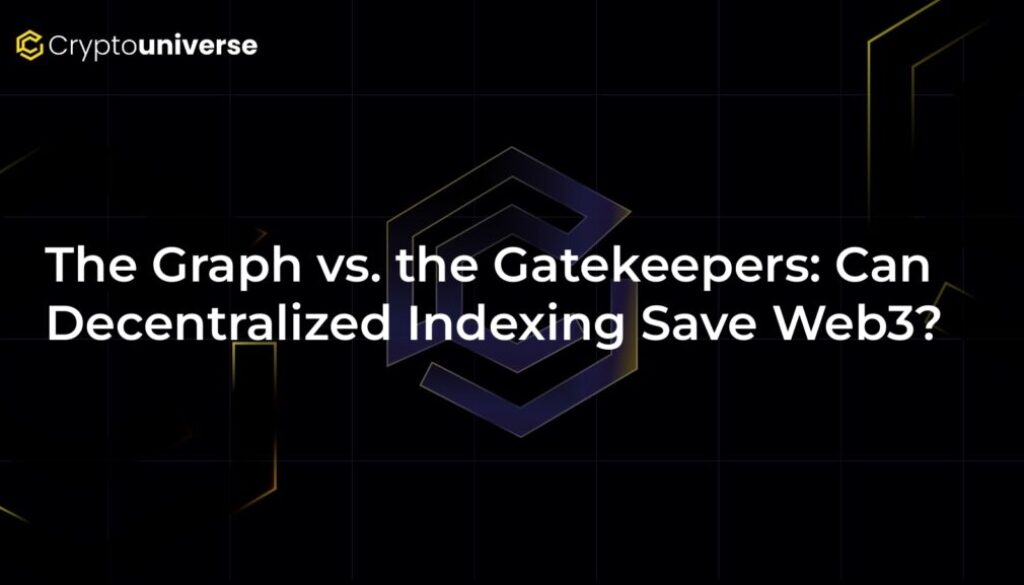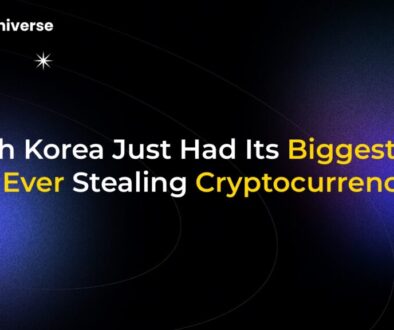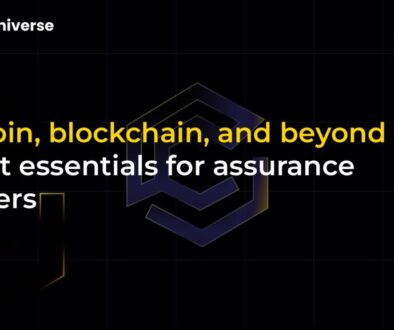The Graph vs. the Gatekeepers: Can Decentralized Indexing Save Web3?

The Unspoken Problem Haunting Web3
Web3 was built on a promise: a decentralized internet owned by its users, free from the control of tech giants and powerful intermediaries. It’s a vision of digital sovereignty, where applications are unstoppable and data is censorship-resistant. Yet, a paradox lies at the heart of this burgeoning ecosystem. Many of the decentralized applications (dApps) we use daily rely on a handful of centralized companies to function.
When you check your NFT portfolio or track your DeFi yields, your app isn’t pulling that data directly from the blockchain—that would be incredibly slow and inefficient. Instead, it’s likely pinging a server run by a company like Infura or Alchemy. These services act as the gatekeepers to blockchain data, providing fast and reliable access. But this convenience comes at a cost: it introduces single points of failure and control into a system designed to have none.
We’ve seen the consequences. A single service outage can bring huge swathes of the crypto world to a standstill. More critically, it opens the door to censorship. If a government can pressure a few companies, they can effectively de-platform dApps and users. This is the existential threat to Web3. So, how do we solve it? The answer may lie in a revolutionary approach to data management: decentralized indexing. This is the battle of
The Data Dilemma: What is Blockchain Indexing?
Imagine a blockchain is a massive, ever-growing library where new books (blocks) are added every few seconds. Each book contains thousands of pages (transactions). Now, imagine you need to find every single mention of your name across all the books in this library. Reading every page of every book would take an eternity. This is the challenge dApps face when trying to retrieve specific data from a blockchain.
Indexing is the solution. It’s like creating a master index or a digital card catalog for the entire library. Instead of searching the raw books, you can just consult the index to find exactly what you need in a fraction of the time. In Web3, indexing services organize blockchain data into efficient, easily searchable databases so that applications can quickly ask questions like:
- What is the transaction history for this wallet?
- Which NFTs does this address own?
- What was the price of ETH on Uniswap at a specific time?
Centralized providers have traditionally dominated this space, offering this “card catalog” as a service. But The Graph proposes a radical alternative: what if the community could build and maintain this index together?
Enter The Graph (GRT): The Decentralized Answer to Web3’s Data Problem
Often called the “Google of Blockchains,” The Graph is a decentralized protocol for indexing and querying data from blockchains like Ethereum, Polygon, and dozens more. It replaces the centralized middleman with a vibrant, open marketplace of network participants who work together to organize blockchain data.
Here’s how this decentralized ecosystem works in simple terms:
- Subgraphs: These are open APIs that act as the blueprint for the index. Developers can create a subgraph to define exactly what blockchain data their dApp needs and how it should be organized. Think of it as writing the instructions for creating a specific section of the card catalog.
- Indexers: These are the node operators who do the heavy lifting. They run the software that processes the data according to the subgraph’s instructions. They stake The Graph’s native token, GRT, to provide these services and earn fees for answering queries. They are the librarians building and maintaining the catalog.
- Curators: These participants are data connoisseurs. They use GRT to signal which subgraphs are high-quality and valuable. By “curating” a subgraph, they earn a portion of the query fees it generates, incentivizing them to identify the most useful data sources.
- Delegators: Anyone can participate by delegating their GRT to an Indexer. They contribute to the security of the network and earn a portion of the Indexer’s rewards without having to run a node themselves.
Together, these roles create a resilient, permissionless, and self-sustaining network for accessing the world’s public data.
The Showdown: The Graph vs. the Gatekeepers
The difference between The Graph and centralized infrastructure providers isn’t just technical—it’s philosophical. It’s a choice between two fundamentally different visions for the future of the internet.
Decentralization vs. Centralization
Centralized providers are run by a single company. They own the servers and control the data. The Graph is a distributed network of thousands of independent operators across the globe. There is no CEO to pressure and no central server to shut down.
Censorship-Resistance vs. Control
A centralized service can be forced to block data from certain applications (like Tornado Cash) or users in specific regions. The Graph’s decentralized nature makes it incredibly difficult to censor. As long as there is one Indexer in the world willing to serve the data, the query will be answered.
Resilience vs. Single Point of Failure
If a centralized provider has an outage, every dApp that relies on it goes down. In The Graph’s network, if one Indexer goes offline, queries are automatically rerouted to another. The system is inherently fault-tolerant.
Permissionless Innovation vs. Walled Gardens
On The Graph, anyone can create and publish a subgraph for any data they want. This fosters an environment of open innovation. Centralized services, by contrast, control what data is available and how it can be accessed.
The Verdict: Can Decentralized Indexing Save Web3?
The Graph isn’t a silver bullet, but it is a critical piece of the puzzle. It provides a viable, decentralized alternative for one of the most critical layers of the Web3 stack: the data layer. By removing our reliance on gatekeepers for data access, we take a monumental step toward building a truly decentralized and unstoppable internet.
Of course, challenges remain. The user experience for developers is still more complex than plugging into a simple centralized API, and the network is in a constant race to scale and meet the ever-growing demand for data. However, the trade-off is clear: a little more complexity in exchange for a lot more freedom, resilience, and alignment with the core principles of Web3.
The fight for a decentralized future is happening not just on the level of currencies and applications, but in the hidden infrastructure that powers them. The battle of


